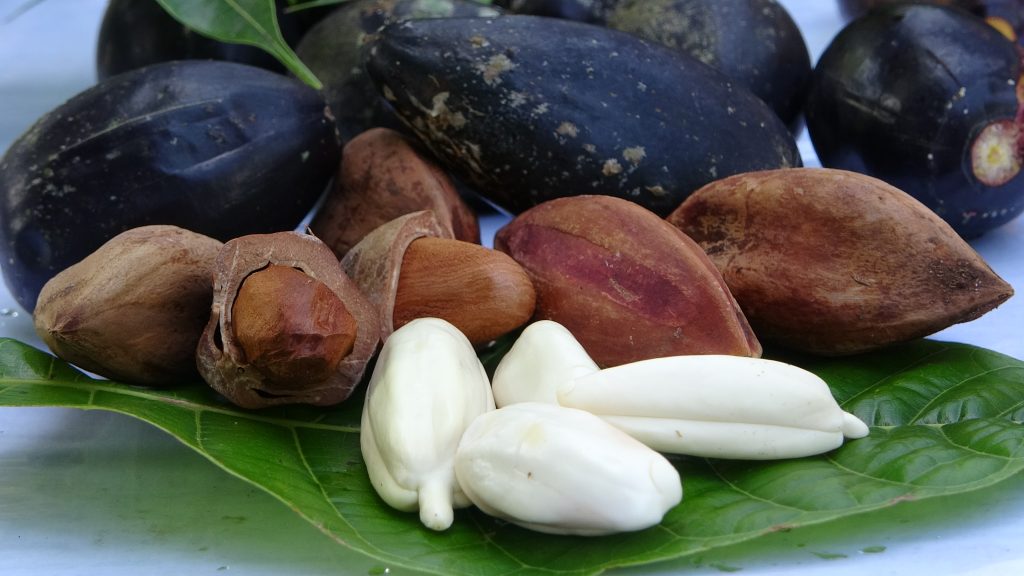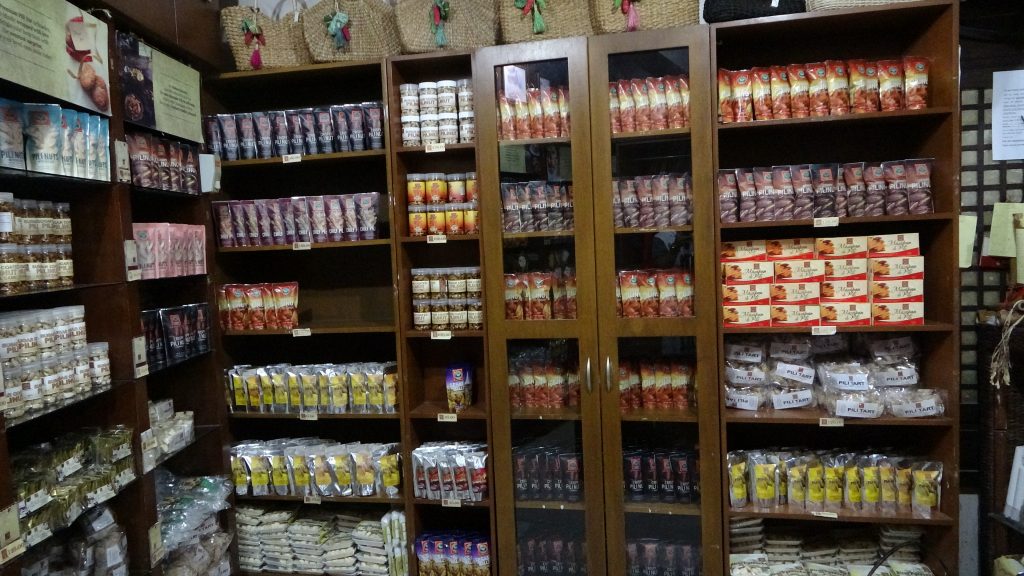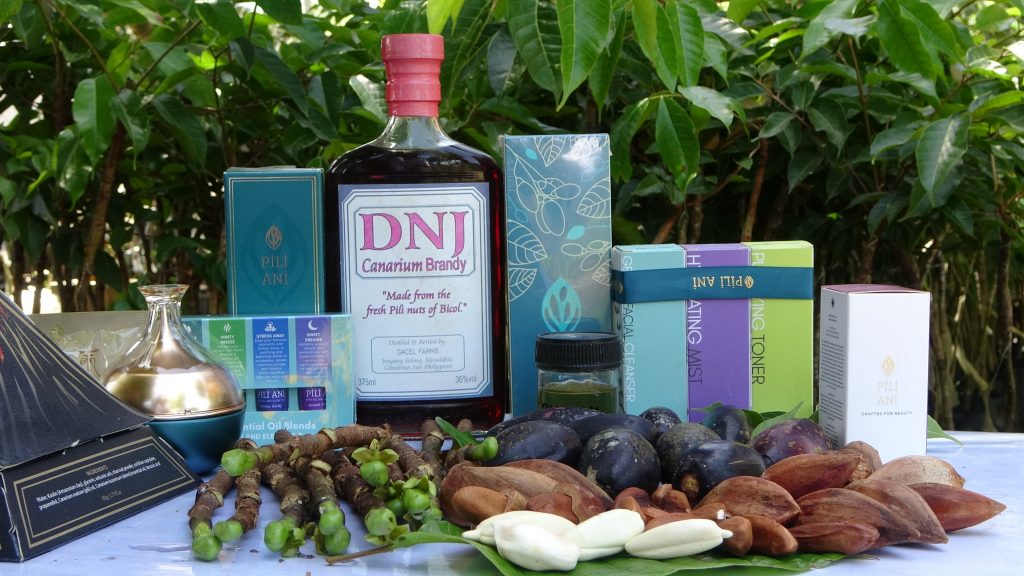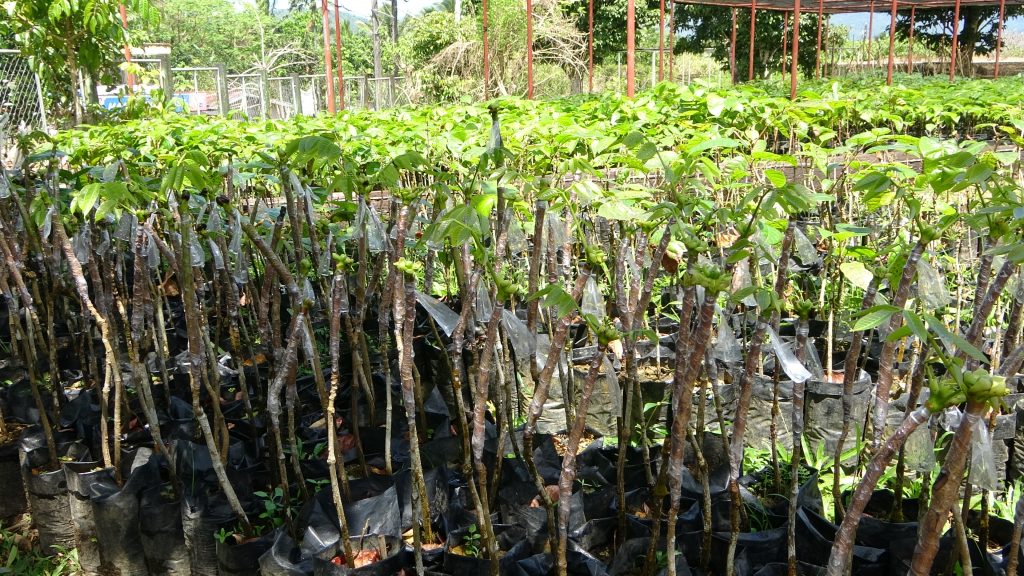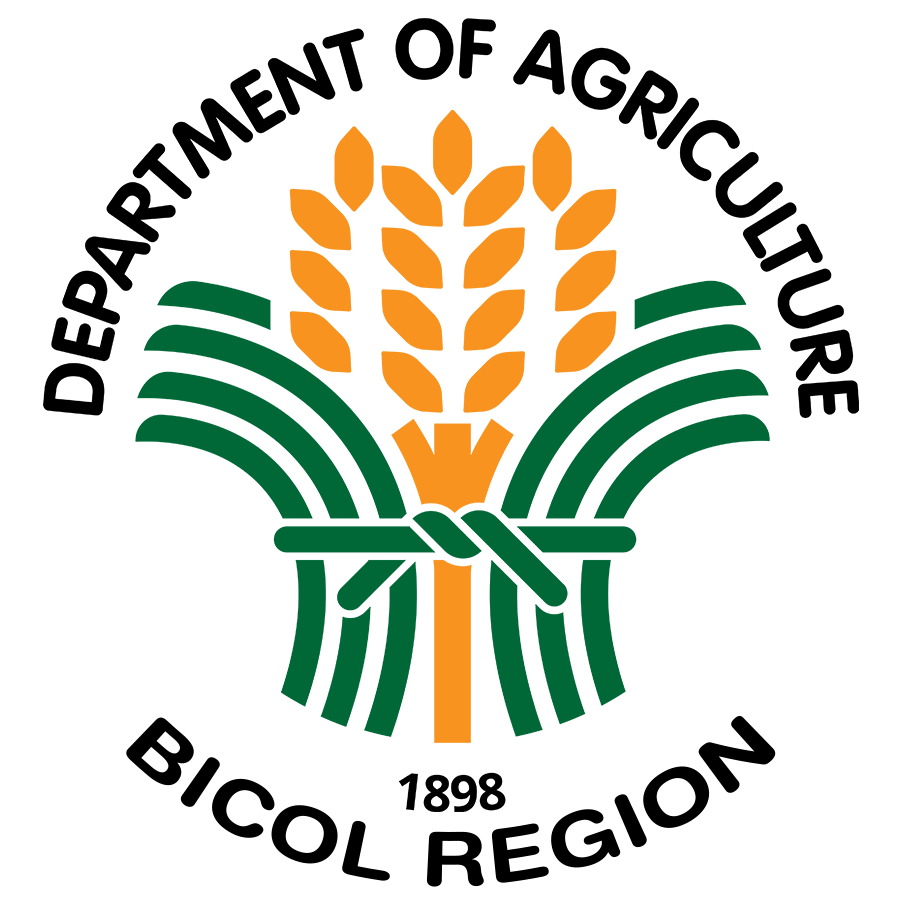By Lovella P. Guarin (DA 5)
One of Bicol’s export products is Canarium ovatum, commonly known as pili. Approximately 90% of the country’s pili production came from Bicol Region.
The fruit of this resilient tree is 7% kernel, 25% shell, 68% pulp. When ripe, the pili nut has a dark peel. Another layer is the pulp which can be eaten if cooked. This pulp is rich in protein and oil. The oil is extracted and used in oil-based products beauty products as the pili pulp oil is considered a superfood for the skin.
The bark of the pili tree when cut releases the resin or Manila Elemi which is used in pharmaceutical products, colors, varnish, ointments, perfumes, and cosmetics for its anti-oxidant and firming properties.
Local processors require more than 2,000 kilos of pili nuts every day. Thanks to some 13,435 farmers who are growing pili in some 142,405 hectares of plantation in the Bicol Region.
A number of pili processors have been exporting pili to the United States, Canada, Japan, Hongkong and Korea.
The pioneer exporter of pili products is J. Emmanuel Pastries based in Naga City. Owned and managed by couple Joseph and Lydia Lomibao, it started from a P500 company that has grown to become the leading exporter of pili products to the USA and Japan. In its 25 years in the pili industry, the JEP has put up numerous local stores in Naga City and Legazpi City. The JEP has slowly inched its way to the global market through participation in international trade fairs in Paris, Malaysia, Hongkong and Dubai, which were facilitated by the Department of Trade and Industry (DTI 5) and the DA Bicol. Proprietress Lydia Lomibao recalled that since 2005 they have been exporting pili to Japan and the US on a regular basis. She stressed the importance of food safety. “Hindi ka pwedeng mag-export without being compliant with food safety, and it must be an international certification,” Lydia quipped.
Another exporter of pili products is COP Pili Sweets and Pastries in Daraga, Albay which has been exporting pili also to Japan and USA. Talks are also underway for exports opportunity in Korea.
“Pag may export talagang maganda ang value ng pili. Sa halip na nagcocompete tayo within the local market, sa export ibang playing field. Pag lumabas ka ng Pilipinas, kitang kita mo talaga kung gaano kalaki yun potential ng pili sa global market,” said Erika Perena, Marketing Manager of COP Pili. “Nagpapasalamat kami sa DA Bicol sa mga oportunidad na ibinigay ninyo sa amin,” Erika added.
Another milestone in the pili development is the opening of the European market to raw pili nut export. The Commission Implementing Regulation (EU) 2023/267 issued on February 8, 2023, authorized pili nut to be placed in the European Union (EU) markets and its 27 member states as a traditional food from a developing country. According to Adelina A. Losa, Chief of DA AMAD in Bicol, “this is a breakthrough for the pili industry as the global demand for the pili nut will surely increase.”
The opening of the EU market in addition to other countries that are already importing pili from the Philippines has highlighted the urgent need for the development of more pili plantations not only in the Bicolanos backyards but for commercial purposes. This is good news for the pili growers.
DA’S EFFORTS IN PILI PRODUCTION
As a flagship commodity under the High Value Crops Development Program, pili have been given the attention it deserves.
Dr. Mary Grace Rodriguez, chief of the Field Operations Division and focal person for High Value Crops Development Program said that the DA Bicol has provided interventions to farmers in every stage of the pili value chain.
Pili propagation through grafting, budding and inarching is being done at the regional nursery and at the Research Outreach Stations of DA Bicol, particularly at the Albay Experiment Station in Tabaco City
Why Asexual Propagation?
Pili trees are dioecious plants. Dioecy is a characteristic of certain species that have distinct unisexual individuals, each producing either male or female gametes in seed plants. Only half the population directly produces offspring (wikipedia.org). In pili trees, only the female trees bear fruits. The female productive trees are only known at fruit-bearing age and the seeds from the bearing trees will not necessarily be totally female. (bar.gov.ph)
This is partly the reason why it is difficult to plant pili for commercial production. The male pili trees serve as pollen sources for the female pili trees to bear fruits. A ratio of 1 male to 20-25 female trees would be adequate.
The Department of Agriculture has long been investing on the asexual propagation of pili trees through inarching and cleft grafting where high-quality mother trees are selected to ensure high yield. Inarching is done through the union of the scion branches from fruit-bearing mother trees. It is more laborious but there is an assurance that asexually propagated pili seedlings will bear fruit within three years. Pili grafting has over 85% success rate depending on the skill of the propagator and the quality of the mother tree used.
Sexual propagation, on the other hand, uses pili nuts to grow trees that will bear fruits after eight up to 10 years of planting. These trees grow taller than their grafted counterparts, but there is no assurance that the tree is female.
Dr. Rodriguez said that the HVCDP has produced and distributed 180,450 pieces of quality pili planting materials from certified varieties from the year 2019 to 2022. For CY 2019 – 52,500 pili planting materials were produced and distributed to farmers. For CY 2020 – 37,950; CY 2021 – 50,000; and CY 2022 – 40,000 pili planting materials.
One of the beneficiaries of DA interventions is the Albay Pili and Cacao Industry Association (APCIA) led by its president Engr. Augusto Fortem. “We are very thankful to the DA 5 for supporting us all the way from the provision of planting materials, trainings and a pili processing facility with building,” he said.
Other initiatives of DA Bicol are Research and development on varietal improvement increasing productivity; postharvest technology to enhance competitiveness and promotion and commercialization
There is also market development support and credit facilitation from the Agribusiness and Marketing Assistance Division.
While the regulatory support services include: Establishment of Good Agricultural Practices (GAP), HACCP and Good Manufacturing Practices; the Dissemination and adoption of established pili products standards – AMAD; and strict enforcement of the nursery accreditation process. Strict compliance with GMP/FDA requirements is critical for market expansion, and compliance with various food safety standards to expand market.
Dr. Rodriguez urged the farmers to plant more pili trees in order satisfy the growing demand for pili nuts both from local processors and importers from foreign countries. “Sana po ay patuloy nating suportahan ang pili upang mas mapataas natin ang produksyon at kita ng mga magtatanim at processors ng pili, at upang tayo ay makilala hindi lamang sa buong bansa kundi sa buong mundo,” she enthused.

